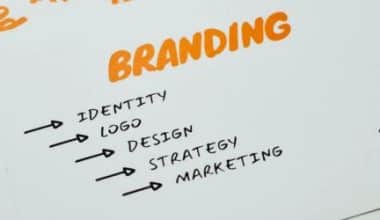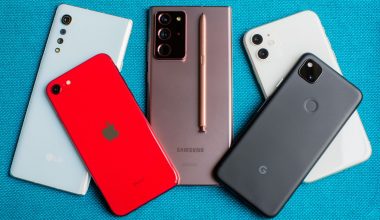Everyone, including you, has a personal brand.
It’s what people think of when they hear your name, what comes up on Google when they search for you, and your social media presence.
It is vital to deliberately create your personal brand and build one that will help you succeed in your job and in your life. A strong personal brand, when done correctly, leads to new opportunities and connections that can alter your life. Having said that, developing a personal brand isn’t easy. While you can wing it and hope for the best, the finest brand builders are planned, niched-down, and, most importantly, consistent. In this post, we’ll discuss the significance of developing a personal brand and present you with some practical methods to get started, even if you’ve never considered it before.
What is a Personal Brand?
While most people associate a brand with corporations, all individuals have a brand as well.
Consider what others say and think about you. It encapsulates your talents as well as who you are, and it is how you can set yourself apart from the crowd. Your brand is what you stand for as well as what you do.
Consider well-known brands such as Apple or Nike. They do, in fact, sell goods. They are, however, more than that. So, they are symbolic of specific values and emotions.
The best personal brands are one-of-a-kind, genuine, and trustworthy. They build a positive image of you that can benefit you both personally and professionally.
Types of Personal Brand
According to a New York Times report, there are six primary types of personal brands:
#1. Altruists
These people are recognized for helping others and devoting their time to charitable causes. Angelina Jolie, Dolly Parton, and Bill Gates are examples of this.
#2. Careerists
These brands prioritize accomplishment over all else. This brand is well-known for sharing information and being thought leaders in their respective industries. Elon Musk, Jeff Bezos, and Simon Sinek all fall under this category.
#3. Hipsters
These brands frequently blend benevolence with careerism, but they are more concerned with knowledge exchange than action. Look to this brand for innovative and fashionable items.
#4. Boomerangs
Boomerang businesses share content in order to stir up controversy. They may not agree with the information they are disseminating, but they enjoy being provocative. This includes your favorite meme accounts as well as news reporters.
#5. Connectors
These people enjoy bringing people together and take satisfaction in forming communities. They are frequently innovative and appreciate the approval of others. Consider your favorite Instagram influencers or celebs.
#6. Selectives
Selective brands only share information with particular groups of people. They are resourceful and take the effort to curate material for their audience.
The first step in improving your personal brand is to understand what it is and how it operates.
Why Should You Build Your Own Personal Brand?
Because your personal brand captures who you are and what abilities you bring to the table, it assists you in making meaningful connections and opens doors to new opportunities. When you’re intentional about developing your brand, you’ll be astonished at who starts contacting you. However, there is more to it than that.
By 2020, freelancers and contract employees will make up 43 percent of the US workforce. If this describes you, a personal brand can help you gain clients and earn a higher salary. It increases your credibility and trustworthiness while also allowing clients to find you.
Read Also: Starbucks vs Dunkin: Pricing, Business Models, Branding & Quality
Furthermore, according to a 2018 CareerBuilder poll, 70% of employers screen candidates by examining their social media, and 43% use it to check on current employees.
If you’re seeking for work, having a positive and purposeful internet presence can make or break your chances. Given that the typical employment duration is around four years, you’ll almost certainly be on the job market at some time, so it’s a good idea to start working on a personal brand before you need it.
With that in mind, let’s look at how you may start establishing a strong personal brand.
7 Proven Personal Brand Building Steps
Here are the top seven techniques to build a memorable personal brand.
Step #1: Determine who you are and what you want to achieve.
It’s vital to discover this information if you want your personal brand to be an accurate picture of who you are, what skills you have, and what your goals are. Think carefully and be true to yourself.
You might begin by asking yourself the following questions:
- What motivates me?
- What aspects of my life do I excel at?
- So, what job saps my energy?
- What type of employment energizes me?
- In what environments do I work best?
- What industries pique my interest?
- Where do I see myself at the end of my career?
- What kind of influence do I want to make?
It’s fine if the answers to these questions alter over time. Your personal brand evolves with you, so be honest today and understand that your image may change over time.
If you’re unsure how to respond to these queries, seek advice from friends, coworkers, and family. Even if you’re certain of your answers, it’s a good idea to get advice from others. They perceive you in ways you don’t see yourself, and it can help you build a more complete picture of yourself.
Once you’re aware of these various aspects of yourself, you can start creating an image that corresponds to them and helps you achieve where you want to go.
This also attracts like-minded folks who are motivated by the same things you are or recognize value in what you have to offer. This strengthens the network.
Step #2: Identify your distinct value offer.
Making the most of your unique selling points is essential for brand development. If you’re the same as everyone else, your personal brand won’t be truly personal. Those who stand out are remembered.
This is where your one-of-a-kind value proposition comes into play. It is a brief statement that captures what you provide that no one else does.
There are two steps you should take while creating your unique value proposition:
- Recognize your own strengths: Consider where you’ve previously excelled. Consider the compliments and talents that others have bestowed upon you. Identifying what you do better than most others creates the groundwork for your distinct value proposition.
- Discuss these advantages: You may build your brand around your strengths by first identifying them. Share your knowledge and highlight your accomplishments. All of this develops credibility and trust, so that if an employer is considering you or if you’re wanting to attract a customer, they can know by your brand that you’re the best person to bring on board.
If you’ve identified your skills but aren’t sure how to translate them into a value proposition, consider how you’d prepare for an interview. Here are a few ideas to help you discover what actually distinguishes you:
1. Make your response specific.
Many people work hard, pay attention to detail, and get along well with others. Instead, consider particular situations where your hard work or interpersonal abilities paid off. What characteristics of yourself contributed to the success of such scenarios? What enabled you to achieve what you accomplished rather than others with comparable abilities?
2. Determine how your individuality will help you thrive.
While knowing your strengths is beneficial, they are useless unless they are used. For example, if you wish to one day shift from sales to venture capital, assess which of your abilities translate from sales to VC. Consider specific examples of how these talents helped you well as a salesperson and how they will help you prosper in the VC business.
3. Discuss your personality.
While hard work is a virtue, not all hard workers are gregarious, fun-loving, and likeable. These personality traits, together with your skills, will help you stand out from the crowd. It’s most likely a one-of-a-kind combo that works nicely for you.
Step #3: Identify your target audience.
Many people make the mistake of attempting to appeal to a broad audience. It is crucial to define your specialty before attempting to appeal to your target audience.
If you’re starting a business, your personal specialization should be complementary to it. If you want to build your career by building a personal brand, your niche should be in a certain area of your profession.
Start with a broad category that interests you, such as sales, marketing, or finance, to find your niche. Then, at least three times, narrow it down.
Read Also: PERSONAL BRAND STATEMENTS: Definition, Examples & Benefits
Consider the distinction between developing a marketing brand and creating an SEO blog and article writing for startups and small businesses.
The first is quite broad and covers so many different subjects that it will be really tough to distinguish yourself. The second gives you a well-defined service to provide to a well-defined audience. Becoming an expert in a tiny niche is considerably easier than being an expert in a large one.
If you’re still not convinced, consider the following advantages of specialized marketing:
- There is less competition. The number of individuals working in marketing is considerably bigger than the number of people working in SEO content marketing for startups and small enterprises, specifically using blogs and articles. This increases your chances of standing out and succeeding.
- Specialized knowledge. While it can take years to refine your knowledge in a broad category, you can significantly more quickly level up in a specialized expertise. This can only assist because additional information contributes to your domain authority and helps you differentiate yourself.
- Customer relations have improved. While it may be tempting to want to reach out to a large number of people, interacting with fewer, more targeted prospects is more effective. It improves the quality of those interactions and raises the likelihood that a prospect will convert (or that a recruiter hires you). You’re also more positioned to get to know your clients on a personal level and customise their experiences to them (or get to know a company better and personalize your interactions with them to land a position). Moving forward, all of this positively fuels itself.
Step #4: Improve your personal website and social media profiles.
Website
First and foremost, you should optimize your personal website. If you don’t have one, now is the time to create one. There are free website builders available, but you should think about getting a domain and web hosting service. I generally prefer Namecheap for low-cost domains. Bluehost is my recommendation for web hosting.
Include the following on your personal website:
- About yourself (interests, education, aspirations)
- Extensive prior experience and relevant accomplishments
- Links to your social media accounts
- Proposition de valeur
- Professional logo, professional headshot, and photographs of yourself
- Testimonials
- Calls-to-action.
In terms of social media, the four most popular channels for personal branding are LinkedIn, Twitter, and Instagram/TikTok. While it is critical that all platforms work together to convey a consistent message, you may want to start by focusing on one.
LinkedIn became a true “social” media network, rather than merely a copy of your résumé, sometime around late 2019 or early 2020. This is so significant that, in 2021, LinkedIn launched a slew of new features, including a “creator” mode for the platform’s influencers (and potential influencers).
There are key fundamentals to consider while developing a personal brand on LinkedIn:
1. Complete all elements of your profile.
This contains an entertaining and compelling “about” section, a headline, bullets about previous experiences that clearly convey the influence you had, skills (get endorsements! ), and suggestions (you can request these from colleagues, clients, or mentors).
2. Make use of a professional headshot.
These should be bright, legible, and completely professional. There will be no low-light selfies.
3. Strategically add talents.
Consider what the top abilities for a marketing director are and include them in your profile if you want to be recognised as one. Then, seek recommendations from your contacts. If you apply for a job or someone searches for a marketing director, people with more aligned and endorsed talents will appear higher in search results.
4. Keywords
Throughout your profile, including the about section, past experiences, headline, and more, use keywords that are relevant to your brand or career.
Once you’ve mastered the fundamentals, it’s time to get involved. What you can do is as follows:
- Leave 3–10 real, informative comments on the posts of other influencers. Find influencers in your industry. If you write excellent comments, they should receive a lot of likes and rise to the top, encouraging others to interact with you.
- Make at least one significant relationship each day. It’s all too easy to send out empty connection requests and never speak with the person. Instead, make an effort to interact with at least one person on a personal basis every day.
- Once a day, post. It can be intimidating to begin posting, but it is the quickest method to build a following and a strong personal brand. Make your posts authentic and relevant to your niche.
It is more difficult to get into the Twittersphere and become a true influencer, but comparable approaches can be used as on LinkedIn.
Follow thought leaders in your desired niche, leave smart comments on their posts, retweet them, and start tweeting insightful thoughts of your own. Wherever possible, join pertinent hashtags.
The key to success on Twitter, as with any other channel, is consistency. The more relevant conversations you have with people in your field, the more visible you will become.
Instagram/Tiktok
With Tiktok and the launch of Reels (Instagram’s Tiktok clone), it’s much easier for you and me to become video influencers quickly.
There are been examples of near-overnight triumphs, such as Pudgy Woke, who acquired tens or hundreds of thousands (and eventually millions) of followers in a month. While this is an extreme example, it demonstrates a hitherto unseen “rapid” brand-building opportunity.
The most important thing is to focus on your specialty, use relevant hashtags, and most importantly, be consistent. Tiktok and Reels are generally trend-driven, which means that new sounds emerge frequently. You’ll notice results much sooner if you can track these trends and offer smart or amusing content.
Step #5: Create a content strategy.
Many people believe that “throwing it all away” with free content is a bad idea. Why would someone hire or pay you if you give it all away?
It’s the exact opposite. Giving up valuable, genuinely useful free content demonstrates that you know what you’re talking about. It demonstrates your knowledge. Imagine what you would do if the free advise worked.
As a result, the first step is to make all of the content you share actually useful and intelligent. You want to be known as a reliable authority in your field.
Step two is to conduct some research on what topics in your niche are creating interest. Google Keyword Planner, Google Trends, and Exploding Topics are excellent tools for discovering what’s hot. You may then capitalize on trends relevant to your expertise to ensure you’re part of the conversation.
Step three is to remember to include all types of information. Posting simply video or only text quickly becomes stale. Distribute various types of material across all platforms. Among these content types are:
- Podcasts
- Online classes
- Infographics
- Text
- Video
- Slideshows
- Webinars
Read Also: PERSONAL BRANDING: Definition, Examples, Tools & All You Need To Know
You can share this information on a variety of sites, including:
- Personal website/blog
- Other online publications and blogs
- Email distribution list
- Podcasts Directories
- Tiktok/Reels
- Youtube
- Quora
- Groups on LinkedIn
- And much more….
Sharing a range of material across numerous platforms boosts your visibility and allows you to build your brand more quickly.
While it may not be possible to create all types of material, try not to limit yourself to just one or two. Instead, attempt to rotate through at least four or five of these content types and put them on platforms or through channels where they are most likely to do well.
Step #6: Always provide value to your audience.
Although briefly stated in the last section, now is the time to underline the necessity of adding value to your audience. It’s simple to make stale content, but it’s much more difficult to develop information that is intelligent, entertaining, and actually beneficial to your audience.
Creating good content needs forethought and intention. Plan out your content and ask yourself, “Will this benefit me?” “Can this be done?”
Don’t accept fluff or lame advice. Make material that will make a genuine difference in your audience’s lives.
Step #7: Build a community
Finally, while having a following may appear impressive, it is meaningless if no one engages with you. Building a community is creating a space where people can interact with you and each other, get to know one another, and aid one another.
If you’re wanting to generate business, this is a great approach to stand out. Similarly, if you merely want to get your name out there in order to enhance your profession, this can help.
Consider the following techniques to begin developing a community:
Groups on Facebook and LinkedIn
These allow users to start threads on relevant topics and converse with one another. You can participate as often as you like to start a dialogue.
Meetups
It’s difficult to overestimate the importance of seeing individuals in person. These meetings can be one-on-one or large group gatherings where people can come together, share, and learn.
Webinars
Webinars enable you to bring people together for a collaborative learning experience. This is an opportunity for you to meet your audience, offer your skills, and continue your personal development.
Succesful Personal Brand Examples
We’ve compiled a selection of good examples of well-defined personal brands to serve as inspiration for your own.
#1. Elon Musk
Elon Musk’s name is nearly as well-known as Coca- Cola’s. Even if you have no interest in technology, it’s difficult to ignore Mr. Musk’s brand.
Having a personal brand makes you a public figure, making your public statements vulnerable to criticism. Elon has been chastised for squandering vast sums of money with little return, as well as for PR stunts such as launching a Tesla into space, which appear to be motivated by ego rather than science. Whatever your feelings are about him, it’s indisputable that his passion and persistence have shown us technology yet to be built and a world whose mysteries remain unsolved.
Despite being a popular person, his unmistakable visage is missing from Tesla.com. Shiny products and crisp copy, on the other hand, are what distinguishes his inventive brand. Behind all of this amazing gadgetry is intensive research and development, as well as a staff of brilliant engineers hand-picked by Mr. Musk. There are no images of him, but his presence pervades every aspect of his website.
#2. Gary Vaynerchuk
Gary Vaynerchuk may be the messiah of hustle if it were a religion. He doesn’t work miracles, but he did convert the family booze store into an ecommerce behemoth. It’s the kind of success story that can inspire anyone with entrepreneurial ambitions.
Gary’s tale of becoming an influencer through social media has humble beginnings, with hard work and perseverance propelling him to success. He represents sincerity and self-determination. He positions himself as someone who is grounded and wants you to achieve success on your own terms by creating content on networks such as YouTube, Instagram, and LinkedIn. In addition, he is a co-founder of VaynerMedia.
A solid identity instills trust in what you do. It’s why we buy brand-name things at the supermarket: we know what we’re getting. There are no surprises. The product’s worth and selling factors are well-established. Your personal brand should be just as well-known.
#3. Charli Marie
When Charli Marie launched a Tumblr dedicated to the pop punk band Fall Out Boy, she was a design student. This fan page was formed out of a passion for the band and a desire to connect with other fans. Her popularity on Tumblr led to the creation of her own t-shirt brand.
Charli wrote about the ups and downs of her t-shirt company. She doesn’t dwell on the loss of momentum for her brand, but rather considers it as a crucial step in her career as a designer. Charli’s Tumblr story inspires anyone with a creative concept that looks to have no other function beyond scratching a pleasant itch to follow through – you never know what opportunities a fan page for your favorite pop punk band could offer.
Charli now works remotely for Convertkit, runs a popular YouTube channel, and has carved out a life for herself filled of travel and adventure. Her positive attitude and design abilities are crucial to her personal brand. She is yet another wonderful illustration of how there are multiple paths to achievement.
#4. Alice Thorpe
On her YouTube channel, Alice Thorpe describes herself as a “freelance graphic designer stumbling through life one pixel at a time.” Alice isn’t hesitant to make fun of herself, and this self-referential phrase is a great place to start.
She creates a lot of design stuff for YouTube and her own website. She is the type of expert that never speaks down to her audience. Her brand is laid-back and amusing. This, along with her expertise, results in content that is both amusing and informative.
Voice is a key aspect of a brand’s identity – see Apple, Progressive, and McDonald’s. We get a feel of their personality by how they talk to their target audience. Your brand voice should be genuine, and Alice does an excellent job of communicating her personality through all of her outstanding material.
#5. Nesha Woolery
“Hey designer lady!” says Nesha Woolery’s website, appealing straight to the audience she aims to reach. Nesha, a project manager and organizer, provides online courses, videos, and articles aimed at female designers. With a light, airy style that complements her own personal brand image, she provides a customized service to a certain niche.
#6. XO Pixel
XO Pixel produces content on design, coding, and technology. Their design incorporates bright colors and an inventive approach that demonstrates their inventiveness. Their free content is informative and helpful, and it serves to demonstrate their worth and promote their paying membership. Branding isn’t a frivolous endeavor centered on glitz and glam, and XO Pixel demonstrates that they have depth.
#7. Bill Nye
Bill Nye is well-known for his bowties and science-dad jokes, but beyond the surface of his popular appeal is a man who values advancing scientific awareness and appreciation. His passion for logic and objective thinking is as crucial to his personal brand as his ability to amuse.
His on-stage demeanor is that of a friendly, silly, uber-nerd. Also, his training as a mechanical engineer lifts him from a TV character blowing up test tubes full of multicolored liquids to a trustworthy expert.
While his website promotes his books and online store, the majority of the information is science-related and approachable – even to folks who have never worn a lab coat.
#8. Brian Dean
It’s tough to know who to believe in an internet teeming with SEO “experts,” mystics with the alleged ability to enhance your online traffic by a gazillion percent.
Brian Dean is an internet blogger who is an expert in Google SEO. His website portrays him as a credible expert, with well-thought-out information, testimonials from real individuals, and a lack of shady adverts. His personal brand is built on trust.
#9. Tony Robbins
Whether you like him or dislike him, it’s difficult to find someone who isn’t familiar with Tony Robbins and his brand of financial self-help, thanks to his prolific output of books, seminars, and other content. Let’s not forget about his personality, vitality, and that mouthful of gorgeous teeth.
If you haven’t been following him, your mind may still conjure up images of Tony in all of his loud, exuberant grandeur parading in front of his adoring followers from the 1990s. Perhaps barefoot walking over burning coals? His identity, though, evolved with the times. He’s no longer yelling at the top of his lungs; he’s become more cultured and muted. His current website portrays him as a financial trainer for the contemporary atmosphere, rather than the raucous self-help guru of the past.
He appears to be a technologist rather than a yelling prophet of self-empowerment. Tony wears a professional, button-down appearance and a knowing grin that downplays his toothy smile, which matches the site’s dark color palette. His website presents a current and relevant personal brand, rejecting the glitter and pizzaz of the past.
#10. Melyssa Griffin.
Melyssa Griffin’s purpose is to assist “heart-centered high achievers in growing their revenue and influence online.” This summary conveys her personality, appeals to entrepreneurial dreams, and connects on an emotional level.
“I believe you deserve happiness, respect, and love,” she states on her about page, reinforcing her personal brand. And I’m determined to teach you the tools you need to produce those sentiments in every nook and corner of your life.” She conveys this message with competence and spunk laced into her high-quality articles. She is also an excellent example of a personal brand that has grown through the use of a blog.
How do I align my personal brand with my professional goals?
To align your personal brand with your professional goals, you need to identify your strengths, values, and unique qualities, and actively work to promote yourself in a way that supports your career or business objectives.
How do I maintain the consistency of my personal brand?
To maintain the consistency of your personal brand, you need to be consistent in the way you present yourself, both online and offline, and to be mindful of your actions and interactions with others.
How do I evolve my personal brand over time?
To evolve your personal brand over time, you need to be flexible and open to change, and to continually evaluate your skills, experiences, and values to ensure that your brand remains relevant and up-to-date.
How do I promote my personal brand to others?
To promote your personal brand to others, you can leverage your personal and professional networks, participate in industry events and conferences, and actively promote yourself through your online and offline presence.
How do I handle negative feedback about my personal brand?
To handle negative feedback about your personal brand, you can be transparent and honest, and actively work to address any concerns or issues that arise.
Conclusion
While developing a personal brand requires a significant amount of effort, the payback is great when done effectively. The personal brand enables you to build a network of experts who recognize your value and consider you first when new possibilities occur.
A personal brand can help you create the business, advance your profession, find a mentor, or never have to look for work again.
Personal Brand FAQ’s
What makes a good personal brand?
A successful personal brand is cohesive, clear, and consistent, with the goal of serving a specific target.
Why do I need a personal brand?
A personal brand identity enables a professional to demonstrate to the world what he or she stands for as an individual employee. Building a personal brand can demonstrate a person’s talents and attributes, outlining what makes them unique or noteworthy.
- Content marketing: Best Easy Guide (+ free course)
- Content Marketing Manager: Job Description, Interview Questions & Salary (Updated!)
- MARKETING CONSULTANT: All You Need to Start (+ Free Tips)
- Customer support: How, why and when to implement. (+bonus guide)
- Social Marketing Strategy: Definition & Examples
- DIGITAL MARKETING: Definition, Types and, Strategies






